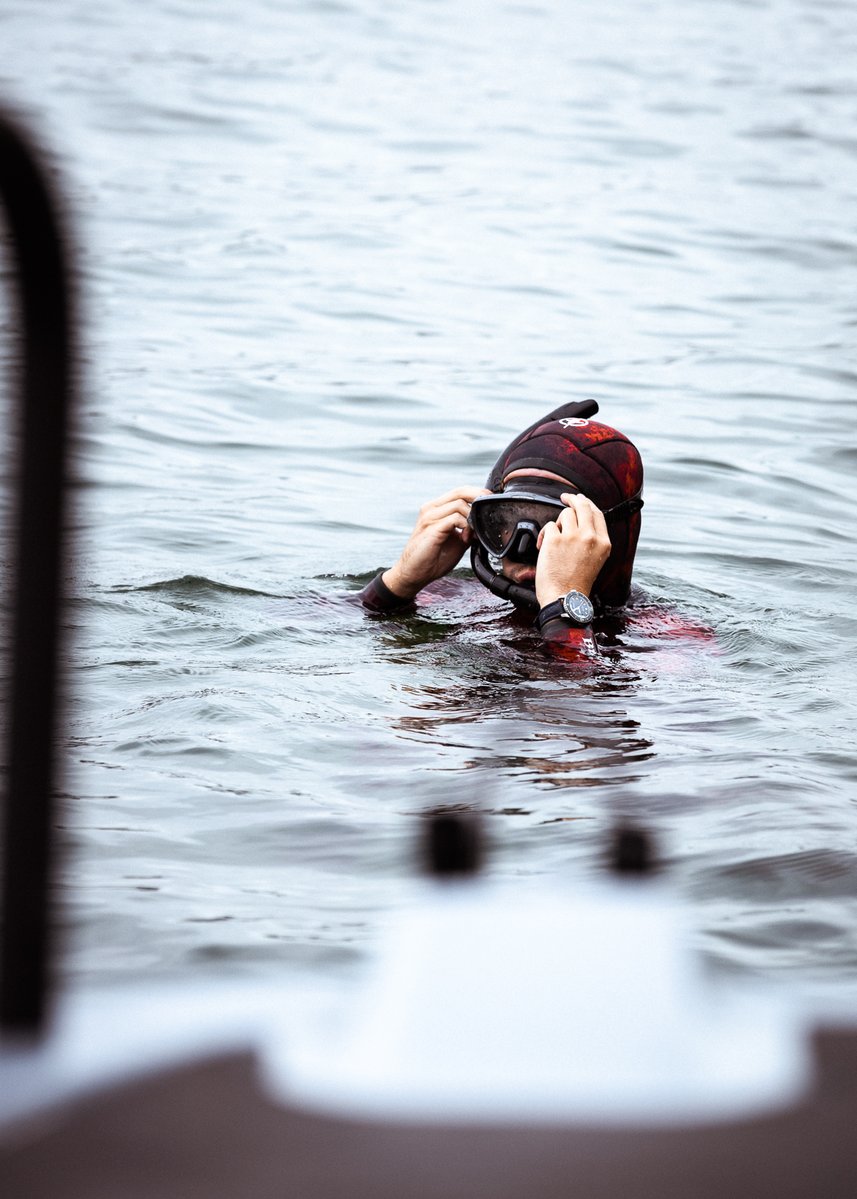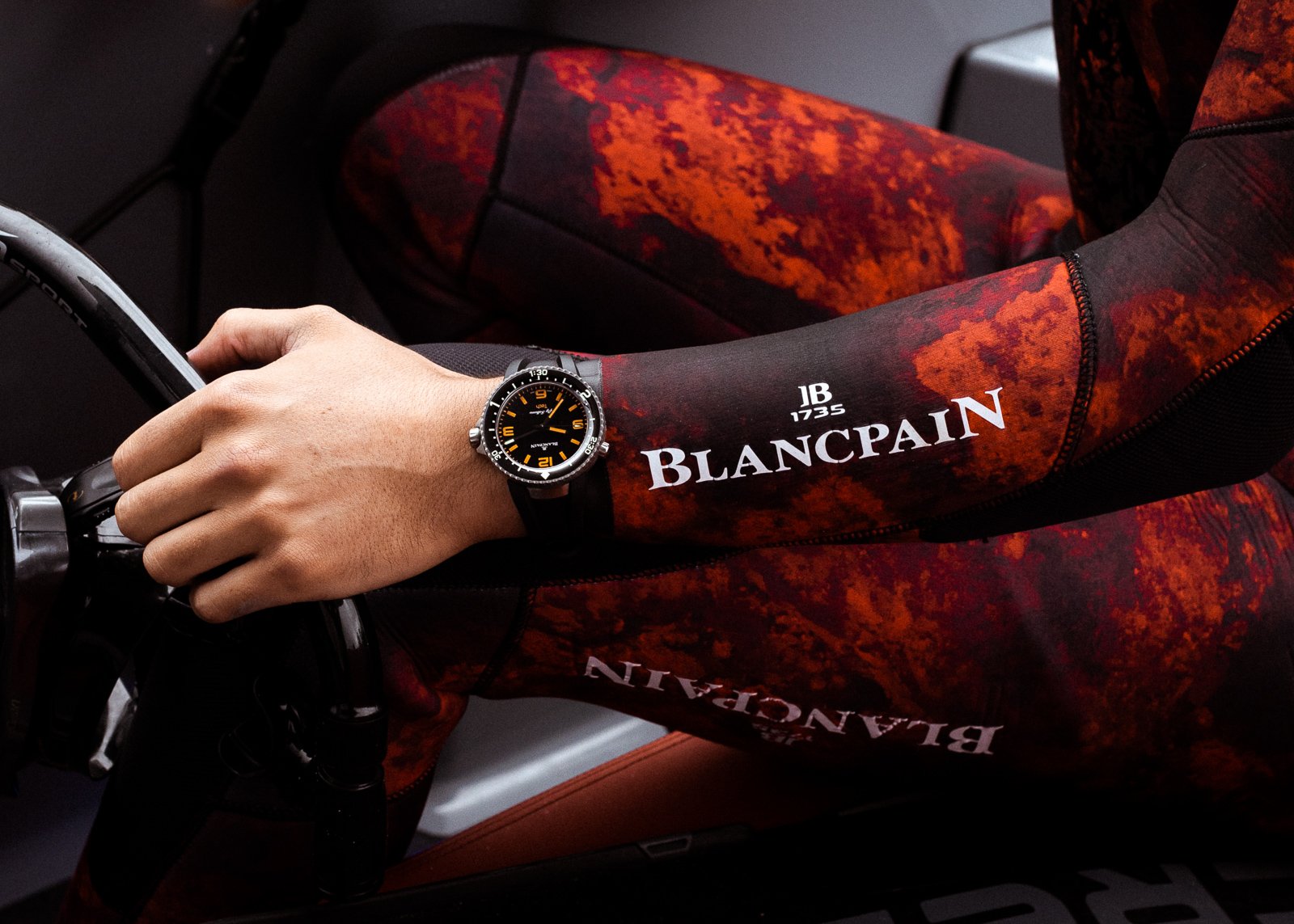Like Blancpain itself, the story of the brand’s historic Fifty Fathoms collection always deserves to be more widely told. The beneficiary of two intertwined, equally compelling origins; it was unequivocally the first fit-for-purpose diver to come out of the Swiss watch industry. First, as the passion project of an intrepid CEO; and later, a watertight solution to the many hazards faced by underwater military operators.
In 2023, this icon of the deep – favoured in ensuing decades by military frogmen and legendary oceanographers – is celebrating its 70th birthday; and with steel divers more popular than ever, it feels opportune to take a quick dive into the history books and contemplate what makes the Fifty Fathoms such rare breed in the world of submersible watches – then, now, well into the future.

Between Expertise And Enthusiasm
Amongst fans of military watches, the Fifty Fathoms’ connection to the French navy is well-plumbed; but what is less obvious is the role that Jean-Jacques Fiechter (Blancpain’s CEO from 1950-1980) played in the watch’s development. Himself a passionate outdoorsman, Fiechter spent his off-time diving in Southern France with club Alpin Sous-Marin – the country’s first historic diving club.
On one particularly perilous dive, a sudden loss of oxygen forced Fiechter to surface without warning – a dangerous process compounded by his inability to properly calculate decompression. He survived, but the ordeal convinced Fiechter of the need for a proper, purpose-built diver: complete with seals for crown and case, and a dedicated timing bezel.
Inspired by Shakespeare’s tragicomedy The Tempest, Fiechter christened this mythical creation the “Fifty Fathoms.” Like all icons of mid-20th-century horology, it incorporated several innovations – all of which remain widely relevant today.

A patented ‘Double O’ locking system helped to waterproof the watch’s crown (even when unwound); while the caseback was fitted with a gasket for a similar purpose. Finally, the all-important timing bezel incorporated an ingenious locking mechanism: so divers could only rotate it when three fingers of pressure were applied.
Today, it’d be unthinkable for any dive watch worth its salt(water) not to possess these qualities, but Fiechter’s creation proved so patently superior that it soon gained the attention of special forces operators. The most famous of these was the Commando Hubert – a unit of French combat swimmers established, as luck would have it, around the time of the OG Fifty Fathoms’ release.

The brainchild of WWII veterans Bob Maloubier and Claude Riffaud, the Commando Hubert was the first military unit to wear the Fifty Fathoms as standard issue. In a de-classified missive written in 1955, Riffaud described the performance of the watch as being “perfect” and “excellent” – even citing how “certain officers [had] expressed a desire to buy a watch of this type for their personal use.” High praise indeed.
That, as it transpires, was just the beginning: in 50 years, the Fifty Fathoms has been adopted by elite German, Israeli and U.S. combat divers (the latter being the source of the legendary Tornek Rayville watches); with its adulation in those circles even giving it cachet among civilians. The most famous of these was legendary French oceanographer Jacques Cousteau, who famously outfitted his crew in The Silent World with Fifty Fathoms timepieces.

A Catalyst For Protecting Our Oceans
Following the conclusion of Fiechter’s tenure as CEO, Blancpain went through a period of dramatic transition. Under the leadership of the now-legendary Jean-Claude Biver, the company redoubled its focus on high-end complications – resulting in a 20-year interval (roughly between 1980-2000) that led to the creation of the so-called “Six Masterpieces.”
Of course, the evolution of the Fifty Fathoms was inevitable; and in 2002, the appointment of long-time CEO Marc Hayek (grandson of Swatch Group Chairman Nicolas Hayek) transformed the collection into a focal point for Blancpain once again. Like Fiechter, Hayek had a strong personal affinity for diving; and his interest in the Fifty Fathoms hallowed reputation amongst professional divers eventually led to the inception of Blancpain Ocean Commitment.


Amongst the most ambitious environmental protection initiatives ever to be greenlit by the Swiss watch industry, the Ocean Commitment program covers multiple aspects of Earth’s aquatic environment: ranging from the creation of new MPAs (‘marine protected areas’) to the famed Gombessa Expeditions – Blancpain’s flagship deep sea explorer mission.
Launched in partnership with Laurent Ballesta, the Gombessa Expeditions are now into their sixth iteration-charting Blancpain’s evergreen commitment to studying the “most elusive marine creatures and phenomena” on Earth.
Within the last decade, the award-winning marine scientist and photographer has led expeditions to the farthest reaches of the ocean: beginning with the search for the mythic West Indian coelacanth (i.e. the inspiration for the expedition’s name); the first deep-sea photography of Antarctica’s ecosystems; and latterly; a never-before-attempted study of immense coralligenous atolls off the coast of Corsica.
All the while, Blancpain has used these extreme environments to field-test experimental riffs on its iconic dive watch: beginning in 2013 with the “X Fathoms” – a leviathan of a dive watch that incorporates pretty much everything a serious deep-sea diver could need whilst underwater.

Writing The Next Act Of A 70-Year Journey
All of that brings us to 2023: also, incidentally, the 10th anniversary of the Gombessa Expeditions. To mark this momentous occasion, Blancpain has just unveiled the ‘Tech Gombessa’ – the latest addition to its Fifty Fathoms collection, rooted in the concise and handsome aesthetic of the 1953 original.
Engineered with Ballesta and his Gombessa divers firmly in mind (the group is currently studying hammerhead sharks in French Polynesia) the Tech Gombessa is far and away one of the gnarliest dive watches ever to be conceived by a Swiss watchmaker. Built for tech dives lasting up to three hours, it has been in development for half a decade; and will maintain its good looks and strident technicality well beyond that.


In reductive terms, a 47mm sports watch encased in titanium; it is the repository of not one, but multiple innovations (much like its historic predecessor) all arising out of real-life trials conducted by Ballesta and Hayek. The case’s remarkable strength-to-weight ratio and waterproofed helium escapement – essential when diving in a hyperbaric chamber – are aligned with a design language that embraces purposive change, as seen in the ergonomically improved centre lug profile and trapeze-shape crown guards (both firsts for the collection).

Undoubtedly, the dial and bezel are where the Tech’s idiosyncrasies shine most brightly. Jointly the subject of a new Blancpain patent, the bezel (alongside a corresponding hand in luminescent white material) allows its wearer to measure technical dives lasting up to three hours. The ceramic timing scale – etched with numerical markings, each in 30-minute intervals – is colour-matched to the corresponding hand on the dial; and these are given significant contrast with the main time display, lumed in a shade of blue-tinted orange that is all but unmissable.

Together, this balance of tweaks and fresh design codes ushers in the next act of the Fifty Fathoms’ journey. Blancpain intends for this new Tech Gombessa to embody the beginnings of a line-up dedicated to specialist dive watches. That just goes to show; 70 years on, there remain vast hidden depths to history’s first dive watch.
This article is sponsored by Blancpain. Thank you for supporting the brands that support Boss Hunting.












